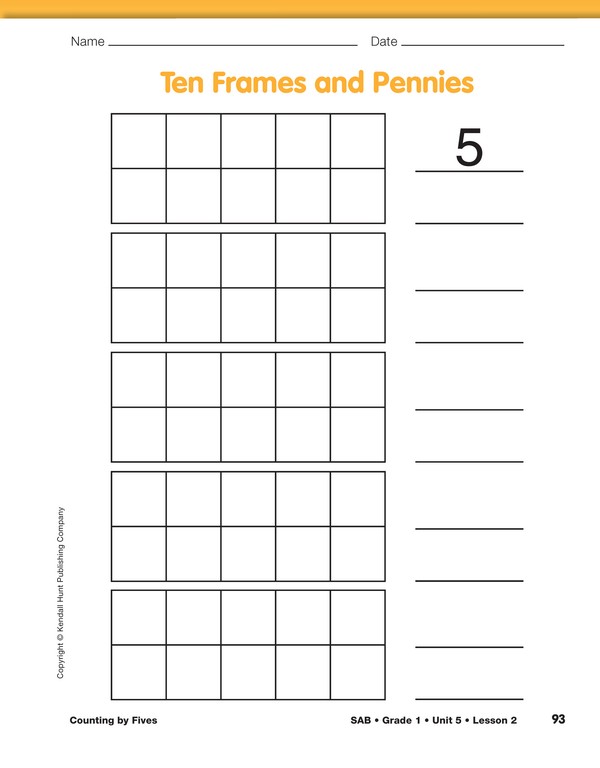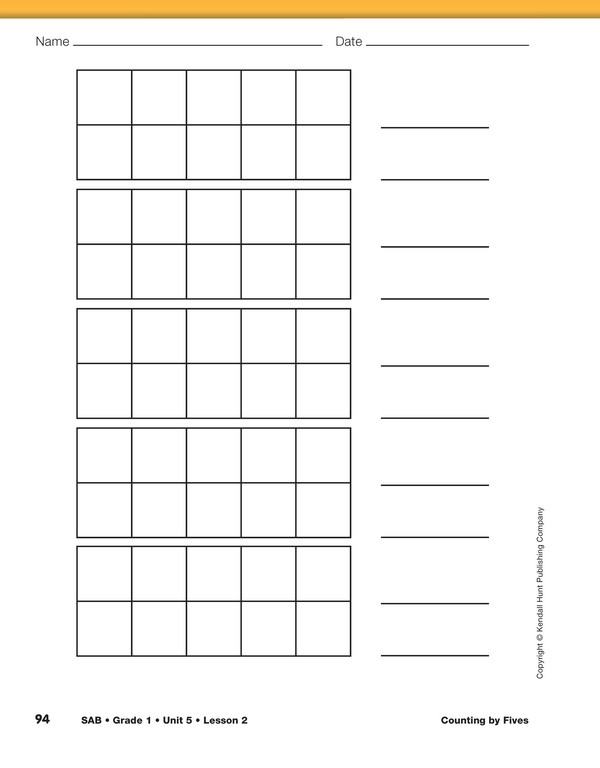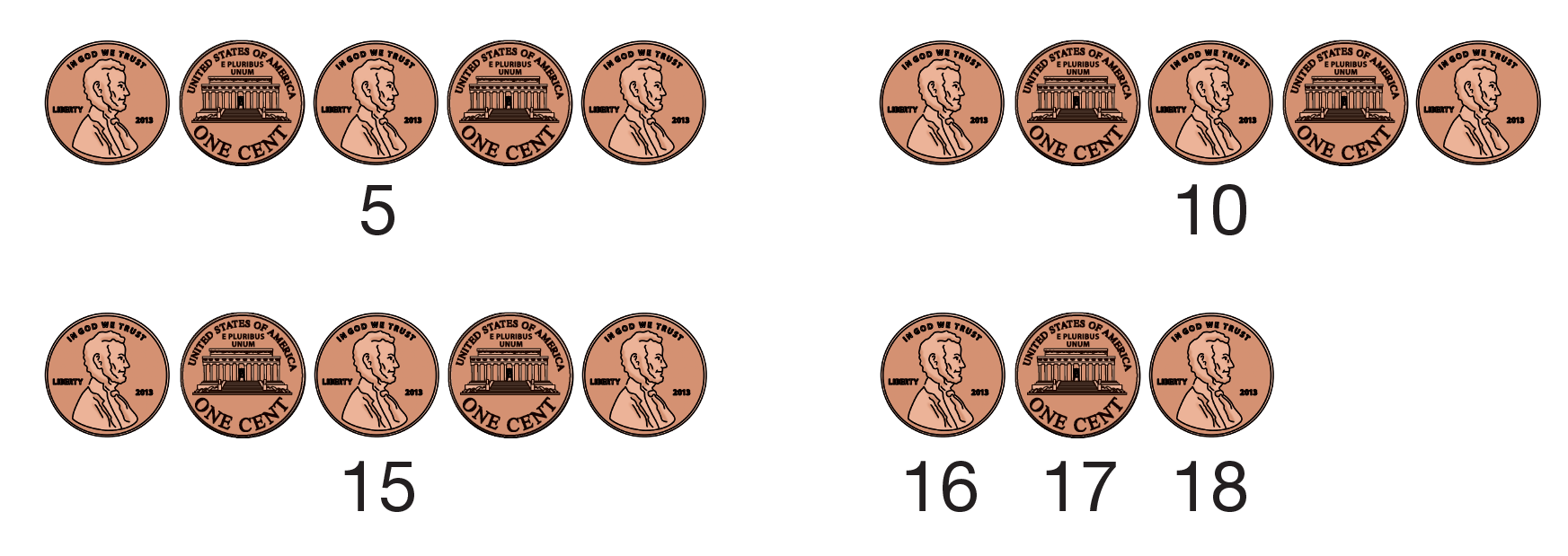Counting by Fives
Est. Class Sessions: 2–3Developing the Lesson
Part 2. Counting Pennies on Ten Frames
Estimate and Count Pennies. Show the small plastic bag of 40 pennies you prepared. Do not reveal the number of pennies in the bag. Ask students to estimate how many pennies are in the bag and tell how they arrived at an estimate. Record the estimates on the board.
Display the Ten Frames and Pennies page from the Student Activity Book and tell students that they are going to count the pennies in the bag. Ask students to count the pennies as you place five pennies on the ten frame. Point out the 5 next to that row. Fill in the rest of the ten frame with five more pennies on the display, as students count 6, 7, 8, 9, 10. Write 10 next to the bottom row of the first ten frame.
Show the remaining pennies in the bag and ask if students want to revise their estimate:
Record estimates and ask students to explain their reasoning for their revised estimate.
Continue to count the collection of pennies by filling the top row of the second ten frame. Record the number 15 on the display next to the top row of the frame. Continue until all the pennies are counted. Each time, record the total value of the pennies on the display besides the row (e.g., 5, 10, 15, 20, 25, 30, 35, 40.) This is an appropriate time to introduce the cent sign (¢). Point out to students that five cents can be written 5¢.
Once students have counted the 40 pennies, have them revisit their estimates and consider which estimates came closest to 40.
Ask:
Show 45 pennies by placing an additional five pennies on the next ten frame. Ask a student to count the pennies now showing on the display by skip counting by 5 (5, 10, 15, 20, 25, 30, 35, 40, 45).
Next, place two more pennies on the ten frame and ask a student to count the pennies now showing on the display. Students can start by counting by five: 5, 10, 15, 20, 25, 30, 35, 40, 45, and then the leftovers 46, 47. Demonstrate how to skip count and count on with other quantities of pennies. See Figure 2. Place 40 pennies back into the plastic bag for the next part of the lesson.
Count Pennies with Partners. Distribute the plastic bags of 30–50 pennies you prepared for each student pair. Show your bag of 40 pennies and ask students to compare it to their bag of pennies to estimate the number of pennies in their bag.
Ask students to share their estimates and their strategy for choosing an estimate.
Have student pairs arrange their pennies on the Ten Frames and Pennies page from their Student Activity Book. Make sure students completely fill each ten frame before beginning the next ten frame and keep a running total of fives along the side of the ten frames. Once their penny collections are counted, students write down the total. Ask students to explain their counting strategies and compare the actual number of pennies to their estimate. Some students may count by ones, twos, or fives. Others may count by tens.
Ask students to place their pennies back in their bag and trade bags with another pair of students. Have students turn over their Ten Frames and Pennies page for a new workspace to place and count this new bag of pennies.
Exchange Pennies for Nickels. Once the pennies are counted, show a nickel on the display.
Ask:
Take 5 pennies from the first row of the ten frame and put a nickel there instead.
Ask:
Distribute 10 nickels to each pair and have students exchange each row of 5 pennies for one nickel. When the exchanges have been made, students should recount their money. They can do this by skip counting by five and then counting on. They should find that they still have the same amount of money.
Emphasize that the totals should match because the coins were exchanged for coins of equal value.
Ask students to place the pennies back in the bag but to keep the nickels for the next part of the lesson.

















